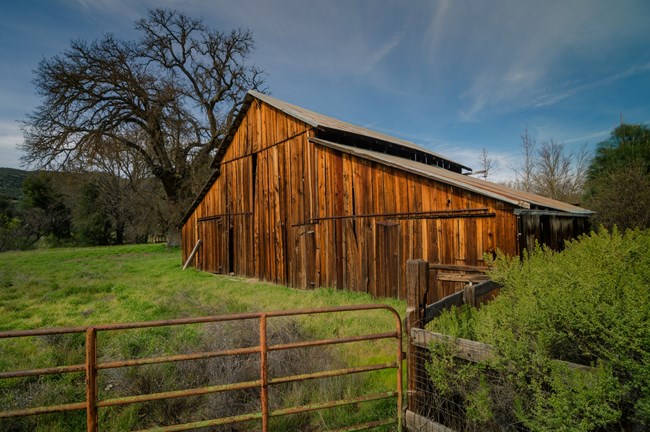
The Chalon Indians lived in the area east of Soledad Mission -- close to what is now the western side of Pinnacles National Park. Willingly or not, many of the Chalon and Amah Mutsun people became neophytes (baptized mission workers); however, the mission way of life was devastating to native people. A combination of diseases brought by the Spaniards and harsh changes to their way of life killed many Chalon and Mutsun people, and damaged their cultures. In 1770 the native population in California, which was already dropping from the effects of European diseases, was estimated at 300,000. By the mid-1800s, it was cut in half. Visit this page to learn more about Piu-uina, a Chalon woman who was born in the Mission system in Soledad, outside what is now the West Entrance of Pinnacles National Park. Mexico won independence from Spain in 1821 so California became a territory of Mexico. The Californios of the state rebelled against Mexican rule to establish its own republic, which lasted only a year. California was converted again during the Mexican-American War when it was claimed by the United States in 1847. There was often ethnic tension in the Pinnacles area, between natives, hispanics and white homesteaders. Another interesting character present in the early history of Pinnacles was Tiburcio Vasquez, one of California's most notorious historic outlaws. He was born in Monterey in 1835 and roamed through the state during a twenty year career of cattle rustling and larceny. He settled near the quicksilver mines of New Idria in 1870 and he was known by many homesteaders from Bear Valley all the way to the Salinas Valley. Many stories told of him hiding in the rocks and caves of Pinnacles. 
The Bacon family were neighbors and friends to Hain and were also involved with the establishment of Pinnacles National Monument, the family grew up playing amongst the trees and creeks of Pinnacles. Horace Bacon established a ranch opposite the eastern entrance and was the school master at Bear Valley School (located on Hwy 25 one mile north of the Hwy 25 and Hwy 146 junction) for twenty years. The Bacon Ranch was eventually acquired by the National Park Service in 2006 and can be accessed via a short hike on a dirt road behind the visitor center. The Bacon family, Hain and a group of other locals known as the Pinnacles boys were responsible for much of the public infrastructure and development of the park in the early years of its establishment. They helped build the first entrance road into the Bear Gulch area, a one way road with designated times for travel. Their efforts laid the groundwork for further development of the park by the Civilian Conservation Corps in the 1930s. Hermann Melville, who lived on the west side of Pinnacles spent a great deal of time exploring the peaks looking for copper and other mining opportunities. He owned the Copper Mountain Mining Company, he lead tours and owned much of the land in the Balconies and Old Pinnacles area. After Melville's death in 1933, the park service added his land to Pinnacles which included most of the western entrance. |
Last updated: January 8, 2024
